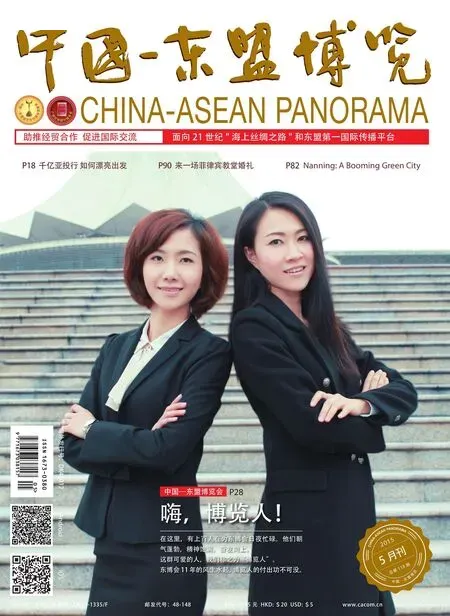Nanning: A Booming Green City
Nanning: A Booming Green City
Nanning, the capital of Guangxi Zhuang Autonomous Region, is located in Southern Guangxi, China. It enjoys a favorable geographical location in Southwestern China, connecting the Indo-China Peninsula to the west and Guangdong Province, Hong Kong, Macao and Hainan Province to the east, making it not only an important economic center along the Beibu Gulf, but also a rapid growing gateway city to Southeast Asia in the southern and southwestern parts of China.
Pleasant climate endows the city with evergreen trees and fragrant flowers all year round, hence the name “Green City”. In such a beautiful land, the Zhuang ethnic minority as well as more than 30 other ethnic minority groups has been living harmoniously for 1,680 years.
City History
Nanning was once the territory of the Baiyue people and came into its existence as a county named Jinxing in 318 A.D. and became the capital of Jinxing Prefecture separated from Yulin Prefecture of the Eastern Jin Dynasty. It was the first time for Nanning to be the seat of a county and a prefecture, which marked the beginning of the founding of its administrative division. In 634 A.D. in the Tang Dynasty, it was named“Yongzhou”. In 1324 A.D. in the Yuan Dynasty, it was renamed Nanning Lu (an administrative division) meaning “May peace maintains in the southern frontier”.
In its history, Nanning was famous for business trade, which had permanent business offices from other areas in China since the Song Dynasty. In the Ming Dynasty, Nanning developed into the commodity distributing center of the Zuojiang River and the Youjiang River with the reputation of “Little Nanjing”. In 1907, it became a port for foreign trade.
Travel in Nanning
As the linking point of the tour route from Guilin to Beihai, Nanning has a lot of attractions to offer in and around the city: grand De Tian Waterfall, beautiful Mt. Qingxiu and Mt. Daming, quiet Yangmei Ancient Town, mysterious Huashan Mural as well as scattered parks and gardens. Being a modern city, its accommodation and shopping are diverse and well developed for visitors. Delicious local foods such as various porridges and rice noodles as well as Suanye (fermented fruits and vegetables) cannot be enjoyed anywhere else in China.
Located at No.19, Qing Shan Rd., southeast of the city, the Mt. Qingxiu is a national AAAA tourist resort. Evergreen trees, strange stones and pure springs on the hill provide a natural environment for sightseeing and relaxation. The Dragon Elephant Pagoda and other cultural relics make the mountain even more intriguing. There are also the world’s largest Cycad Garden, the Grand Tropical Rainforest Garden and the Palm Tree Garden that are worth exploring.
Every year on lunar March 3rd, Zhuang people hold various interesting singing games to celebrate an ancient festival --March 3rd Singing Fair. Singing to find spouses or friends, echoing singing, song name guessing are all particular activities of this wonderful ethnic group. Local operas will also be played, quite attractive to those who are interested in Chinese folk music.
Every September, the China-ASEAN Expo is held in Nanning. Commodities shows, business cooperation, commerce summit forum as well as other consulting meetings provide a wide platform for merchants to communication with others from all over the world. During the same period, musicians and artists from home and abroad gather in this city for the Nanning International Folk Song Art Festival, forming an art communication feast. During the festival, many grand activities are held, such as the National Ethnic Folk Music Competition, Square Culture Presentation and Southeast Asia Delicious Food Festival.
Invest in Nanning
As an important gateway to Southeast Asia for Southwestern China, Nanning is a hub, a regional center, and an opening city that plays an active role in the communication between China and ASEAN countries. It is becoming a new and booming economic zone and a hotspot for foreign investment in China.
In 1992, the central government introduced the strategy of giving reins to Guangxi’s geographical position as a channel to the southwest and a window to the outside world. Nanning, as a centerpiece among Guangxi’s coastal cities, has gradually become a thoroughfare of transit for areas in Southwest China seeking to gain access to the outside world and as an important gateway for importing commodities for Southwest China. Since 2000, the city has been designated as an important region for the West China Great Development Project. It is also the only capital city in the minority autonomous regions that enjoys both the preferential policies for coastal cities and the preferential policies for the middle and western parts of China.
With geographical advantages of adjoining rivers, seas and borders, communications and transportation networks in the city have been developed in three dimensions inclusive of airlines, railways, highways and waterways.
The city also houses an array of industrial zones including the Nanning New and High-Tech Industrial Development Zone, Nanning Economic and Technological Development Zone, Nanning-ASEAN Economic Development Zone, and Nanning Bonded Logistics Center etc., trying to build itself into a regional base for logistics, commerce, processing & manufacturing, information exchange, and fi nance.

